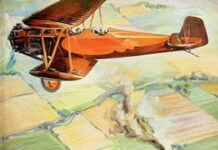Our ancestors dreamed of flying as free as birds, from at least as far back as writing began. Renaissance genius Leonardo da Vinci wrote “I have always felt it is my destiny to build a machine that would allow man to fly”.
After he flew nonstop from New York to Paris arriving May 21 1927, Charles Lindbergh wrote “It is the greatest shot of adrenaline to be doing what you have wanted to do so badly. You almost feel like you could fly without the plane”.
We Have Leonardo’s and Charles’ Word for It but Where Did it Start
Was It the Inventive Genius of Daedalus and Icarus?
A man named Daedalus was unjustly imprisoned with his son Icarus according to Greek mythology legend. They decided to escape by flying on wings made from wax. They planned to leap from a tower, and use the Sun to navigate home.
But alas, the young man few too close to the sun with the exuberance of youth. The heat melted his wax wings and he plummeted to earth. This story stands as a monument to aviators and astronauts who gave their all down the centuries. It is also a sober warning that the brave, not the foolhardy, should dare to fly.
The tale of Daedalus and Icarus first appeared in the writings of Greek poet Homer who lived in the 2nd Century BC. We have no idea what fueled his fertile imagination. Might he have based his ‘legend’ on an actual event?
We are, however perhaps on more solid ground with the Chinese kite-flying tradition that began three centuries earlier in 5th Century BC. However, there were no ‘manned’ flights per se, although rumors rebounded because there was talk of wind-born propulsion.
Perhaps the Clue Lies in the Work of Hero of Alexandria?
Hero of Alexander lived from AD 10 to AD 70. Informed opinion rates him the greatest experimenter of antiquity. He invented a steam-powered device that was effectively a rotary steam turbine. His contemporary Heron thought it could be used to propel warships.
Two millennia later we can look back on Hero’s Aeolipile – as he called his steam turbine – as a pioneer in the art of mechanical propulsion. We know successful flight depends on the three elements of lift, propulsion and direction. Perhaps we are looking at the moment automotive propulsion began?
Maybe, Just Maybe It Was Leonardo da Vinci’s Ornithopter
An ornithopter is an aircraft that flies by flapping wings. Daedalus and Icarus were not there yet, because they formed the body of the aircraft themselves. However, the earliest working models may have achieved no more than a glide.
Legend has it an AD 11th Century monk Eilmer of Malmesbury achieved a 220-yard glide using a ‘birdlike apparatus’ to glide against a breeze. However, we find the earliest reliable record in the work of Roger Bacon, an English philosopher who imagined flying machines and motorized ships and carriages.
Leonardo da Vinci was a successful artist, but also a forward-thinking scientist. He kept copious notes of technical ideas that were far advanced of anything that would follow for centuries. He studied the flights of birds, but realized humans were too heavy to support themselves on wings on their arms.
Accordingly, he devised a primitive helicopter controlled by an aviator lying on a plank looking up. In Leonardo’s fertile imagination the pilot uses a system of hand levers, foot pedals, and a system of pulleys to control a pair of giant, membranous, gently flapping wings.
However, the First ‘Manned Flight’ Was Probably a Hot Air Balloon
The Chinese, who incidentally invented kites, also developed the first hot air balloons in the form of lanterns they used for signaling. However, it took two Frenchmen with nerves of steel to achieve the first manned flight we can confirm actually happened.
Brothers Joseph-Michel and Jacques-Étienne Montgolfier took the first (tethered) balloon ascent on October 15, 1783. After several rounds of experiments their test pilot Jean-Francois Pilatre de Rozier ‘captained’ the balloon in the world’s first free flight on November 21 of the same year.
Jacques Étienne Montgolfier, father of brothers Joseph-Michel and Jacques-Étienne was so excited by their achievement he changed the motto on the family crest to read ‘Sic Itur Ad AstraSo We Go to the Stars. As indeed we shall as we travel through the history of aviation and create the story of our Civilization.








